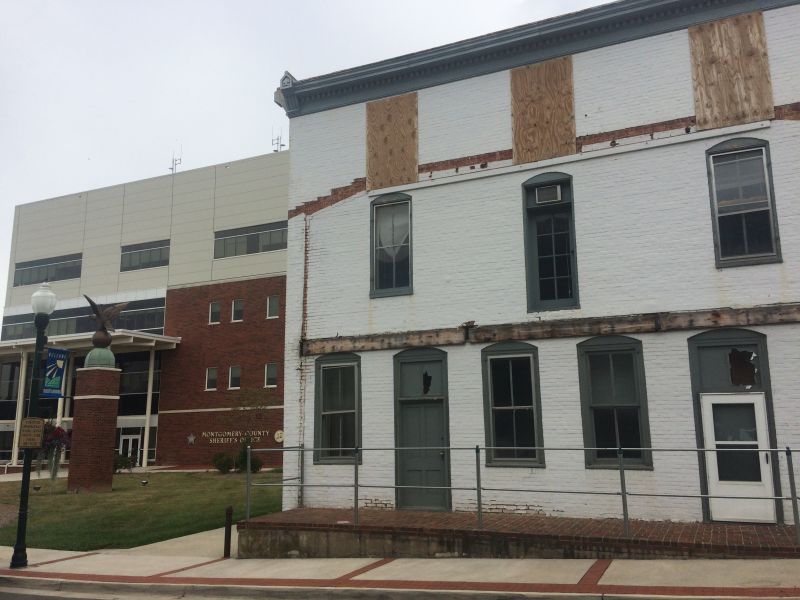Liz Kirchner
Concerned for the fate of the historic Phlegar and Taylor buildings on Franklin Street , representatives from the Montgomery Museum of Art and History and the economic development organization, Downtown Christiansburg Inc., spoke to the board of supervisors about the buildings’ histories, their intangible value and possible futures.

The cost to demolish them may outweigh the cost to preserve them.
Similar information about the history and nature of the buildings was presented to the board in 2011.
Montgomery Museum curator Sherry Wyatt spoke about the history and cultural context of the buildings.
The Phlegar Building is perhaps the county’s best surviving late-nineteenth century law office and a rare example of a late-nineteenth century building in downtown Christiansburg, “ she said, presenting sketches and photos of the building and listing the influential Virginians like William Preston whose offices were housed there.
The lower part of the Phlegar Building, also known as the Courthouse Annex, is two hundred years old. Its exterior walls and some of the interior walls are solid feet-thick brick.
People interested in preserving historically significant architecture will be watching to see what you do with this property said Bob Poff, a museum board member and owner of the massive Antiques on Main.
The smaller, columned Taylor building, or old Sheriff’s office, just to the right of the Phlegar Building, also housed law offices.
InIn 2017, the decorative Eastlake two-story porch of the Phlegar building, thought to be a danger to passers-by, was pulled down.
Both buildings are in the Downtown Historic District and the Phlegar Building is on the National Register of Historic Places. In 2014, it was added to Preservation Virginia’s List of the Ten Most Endangered Historic sites in Virginia.
The Virginia Department of Historic Resources visited the Phlegar Building in 2017, finding it in “good condition overall” the presentation related.
Bob Poff delineated the values the Montgomery County Comprehensive Plan sets forward for preserving and promoting historic preservation as important for tourism and for historical continuity.
Sixty three percent of people rate historic preservation extremely important and many, said Poff, have voiced their disappointment in the demolition of the 1909 Courthouse.
“It is my hope that you will take action to rehabilitate these two buildings. Citizens in future years will applaud your efforts,” he said recommending exploring historic tax credits, which can total 45 percent of the overall cost, he said.
He then offered to contribute up to $7500 personally if a preservationist is engaged to evaluate possible renovation.
Justin Sanders, President of the Downtown Christiansburg, Inc. listed the value of interesting architecture and historic authenticity to economic development of a town, pointing out that re-using old buildings is also environmentally sensitive.
“The National Trust said “the greenest buildings have already been built,” Sanders said. “If they’re demolished and go to the landfill they’re lost. A building that’s 100-years-old can be efficient.”
A Christiansburg resident who owns buildings in town, Johanna Hicks, also rose to speak in support of preserving the old buildings. Hicks, originally from Columbia, cited her hometown of Filandia, an Andean town known for its colorful colonial architecture, coffee and tourism.
“I love that we keep the old buildings alive and people come to see them from all over the world. They show how hard people worked in the past to build them,” she said. “We own several buildings on Depot and College Street. We want to preserve buildings like that to help us remember what Christiansburg is all about.”
The board will vote on the fate of the buildings in the coming months.


